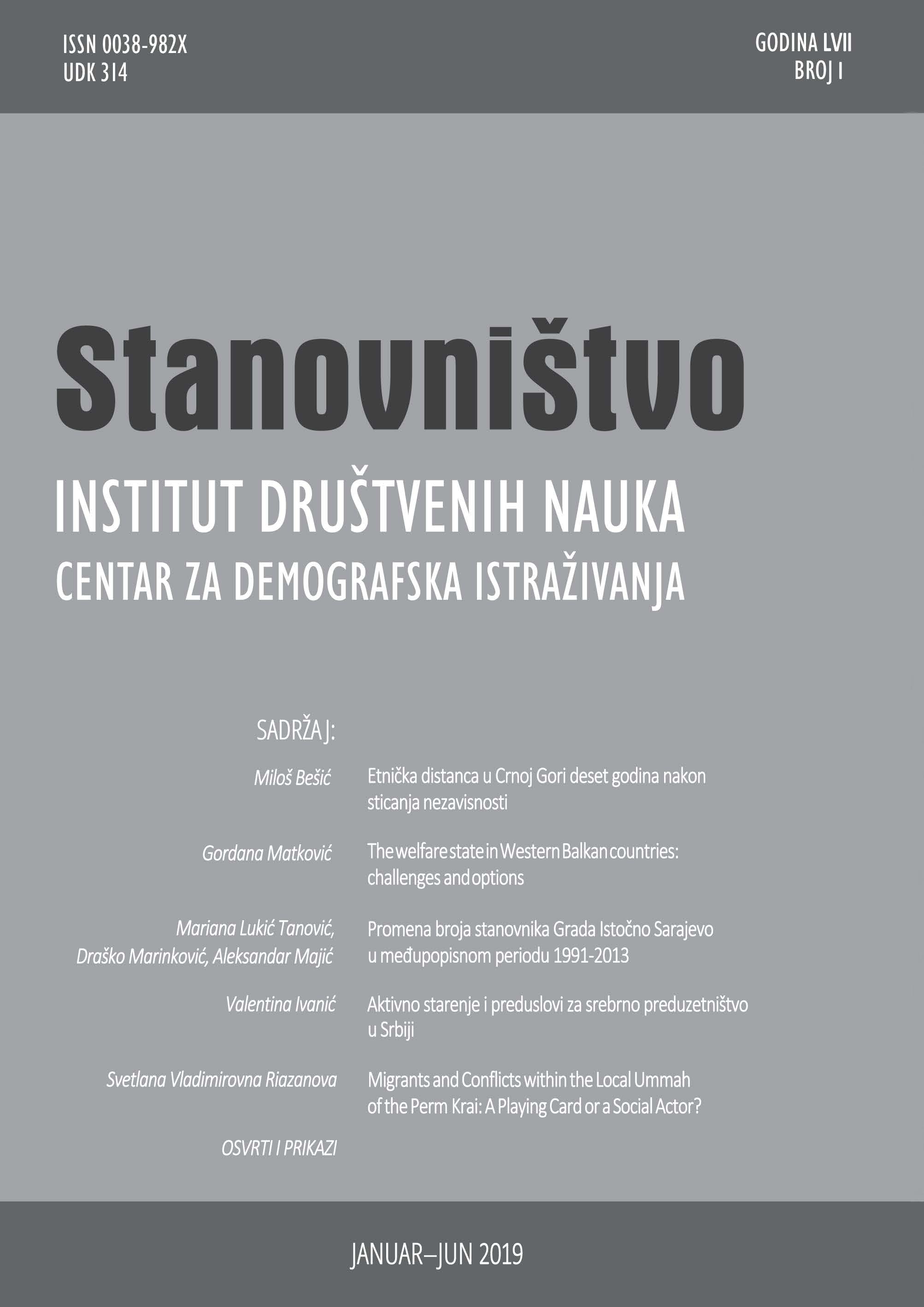Etnička distanca u Crnoj Gori deset godina nakon sticanja nezavisnosti
Ethnic Distance in Montenegro 10 Years after gaining Independence
Author(s): Miloš BešićSubject(s): Social Sciences, Sociology, Evaluation research, Ethnic Minorities Studies, Sociology of Education
Published by: Институт друштвених наука
Keywords: Crna Gora; etnička distanca; regresiona analiza; Bogardusova skala; društveni rascep
Summary/Abstract: In this paper, we present a longitudinal research study examining ethnic distance in Montenegro. The research is based on measuring ethnic distance at two points in time: in 2013 and 2018. This research was carried out using the nine-level Bogardus social distance scale. There are some important notions con-sidering the significance of measuring ethnic distance in Montenegro. First, this is a multi-ethnic country where Montene-grins, as the main ethnic group, have a relatively small majority. Second, this was the last country to leave former Yugosla-via, gaining independence in 2006. Third, the main political and social cleavage in this society is based on ethnicity. Fourth, there has been no change in the ruling elite of Montenegro since the beginning of the transition from socialism to liberal democracy. The main hypothetical argument re-garding the expected changes in inter-ethnic distancing is, therefore, political. During the process of gaining independ-ence, there was an informal alliance among Montenegrins and non-Serbian minorities, since Serbs as an ethnic group wanted Montenegro to remain in a com-mon state with Serbia. This caused clear and pronounced political division in Mon-tenegrin society. Of course, this kind of social cleavage has historical precedents in the Balkans. Prior to the independence issue, which was raised in the late 1990s, Montenegrins and Serbs, as the combined ethnic majori-ty, were in favour of Serbia and Montene-gro remaining united. However, after gaining independence, Serbs, who had been a majority in their own country, suddenly become a minority in Montene-gro. Since almost any politics in the Balkans is ethno-politics, we examined inter-ethnic distance across two reference periods in order to identify the trends in inter-ethnic distancing. The results showed that the overall inter-ethnic distance in Montenegro increased during that five-year period. We argue that the temporary alliance between Montenegrins and non-Serbian minorities resulted in good inter-ethnic relations among these groups, while they were striving to achieve a common political goal. However, after independence was achieved, it was to be expected that inter-ethnic relations would deteriorate. We provide evidence to support this thesis. The results of our research show that overall inter-ethnic distance increased in the five-year period surveyed. In partic-ular, we saw a dramatic increase in the ethnic distancing of Albanians away from all other groups. In addition, ethnic Bosni-ans are distancing themselves from Mon-tenegrins and Serbs more so than they were in 2013.
Journal: Stanovništvo
- Issue Year: 57/2019
- Issue No: 1
- Page Range: 1-25
- Page Count: 25
- Language: Serbian

